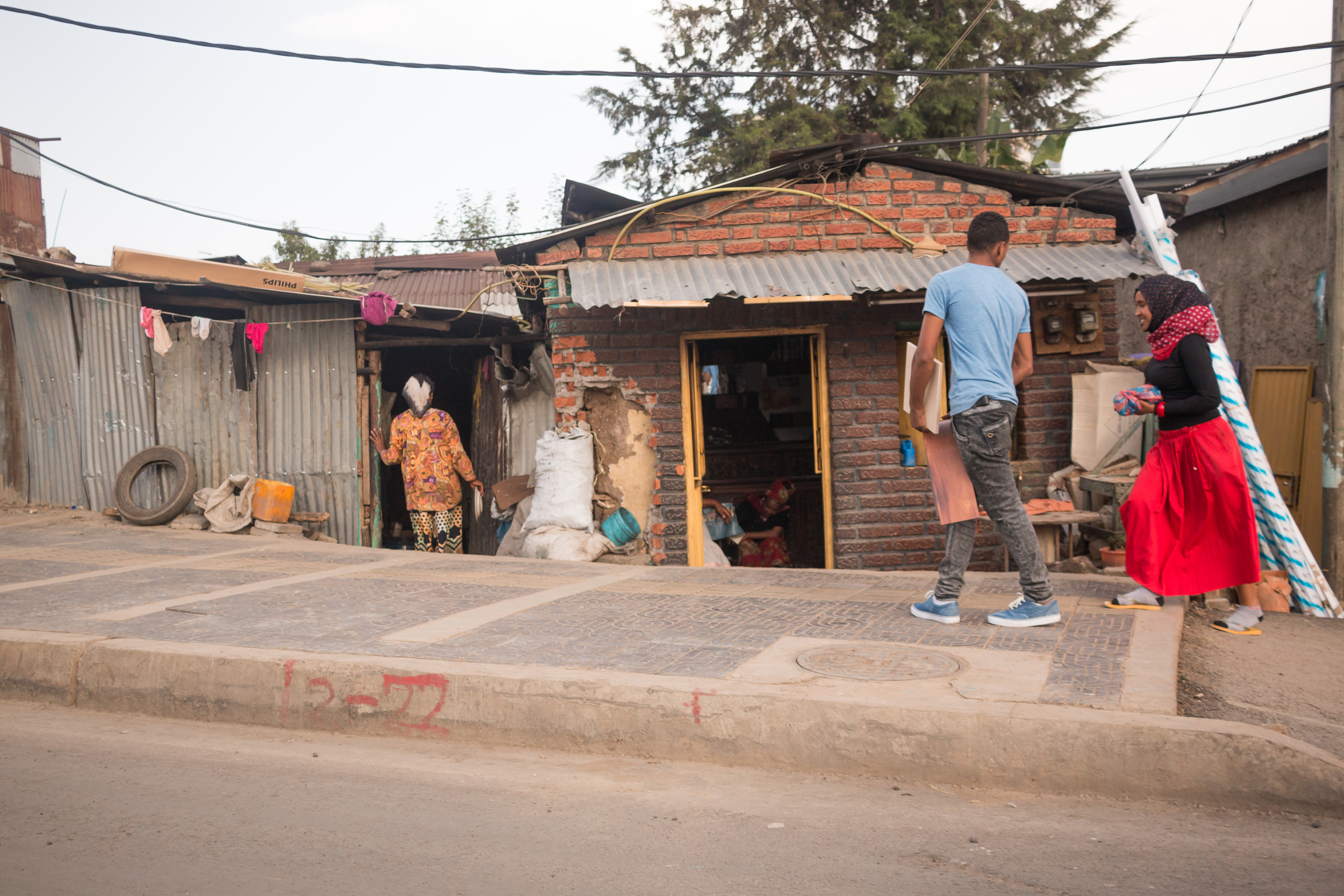“You gotta go man!!” Jostein flashes a massive smile and preemptively claps and shouts as I get up from our table. I steady my feet on the straw covered floor. 'Hands on knees, shake dem shoulders, shake em!' I think to myself. Half frantic, half composed, I lurch and shake across the floor. The dim red light reflects on my sweaty hair, as the local crowd of 2-3 dozen begin to respect my moves. Well that may be pushing it but they aren’t laughing at me. For what seems like an eternity - but was most likely 5 minutes or so - one of the dancers and I encircle each other. We throw moves back and forth at one another, pausing to sing or shout. When I take my seat I’m all laughs. I even got a thumbs up from a nearby patron or two. Jostein and I are at Fendika:
It’s a local Amharic dancing spot. Jostein has been to another dancing place in Addis, but immediately he tells me this is different. The atmosphere is subdued when we get there, the first to arrive. The bar staff don’t speak much English, there isn’t even a stage but a clearing in the middle of the domed, cozy room. Pictures of dancers, musicians, and friends cover the walls. Carpets and cushions line the edges of the room. There is a young guy, maybe 18 or 19, warming up on the drums. Another, older man begins to pluck his one string guitar. His instrument is part banjo, part violin, completely low-fi creation. At the bottom is a hollow, thin box that is strapped to a large wooden stick which acts as the neck of the instrument. Running lengthwise is one long string played with a bow made of a curved branch and a thin string. The drums are similarly DYI. I feel a first-day-of-school anticipation: WTF is about to happen? We’ve chosen the closest seats to the action and I’m wondering what that is going to bring.
If you haven’t seen Amharic or Ethiopian dancing, take a look below:
Before the dancers show up, the banj-olin man signals to the drummer – who now has a massive grin on his face – to lay down an up tempo walking beat which will carry us through the night. Banjolin man walks over to the table next to us. There are eight or so locals having drinks and generally being loud and happy. They look up at him and he stops strumming and listens. He sharply plays two notes, says-sings a line or two, sharply plays another, blurts out another quick line or two, makes one final stoke on the banjo-thing, pauses for comedic timing and lays down the final line to complete the roast on one of the guys. The table bursts into laughter and Banjolin man dives into a twangy melody. The roast-ee stands up and shakes what his momma gave him. Jostein and I look at each other and laugh, with not a clue what has been said. This roast of the audience continues for some time. I’m not sure who is enjoying the interactions more as everyone seems fine being laughed at. Of course he can’t resist us and when he approaches us, pauses and says ‘where from, where from friends?’ We are now ‘Norway’ and ‘America’ for the rest of the night. While we don’t know what he said to get one of the biggest laughs so far, we certainly don’t have a problem being part of the night. Turns out that wouldn’t be a problem.
Lighting and part of the banjolin
“Oh, they have Tej here!” Jostein says excitedly. Tej is a honey wine made primarily in Ethiopia and Eritrea. You can’t buy it in stores; it’s only available where it’s made, usually bars and restaurants. We each get a porron-type vessel and man, it does not taste as strong as it is. After another Tej, or possibly two, the dancers come out to a well lubricated and rowdy crowd. Two men and two women, in full Amharic dress – the women wearing flowing full length dresses with colorful long scarfs as a belt and the men in silk like pants up to their bellybuttons. No shoes were worn. Although this style of dance is primarily from the waist up – shoulders and head, shoulders and head - we were in awe. Watching these rhythmic magicians felt like stepping into a wind tunnel of dancing turned on full blast. First the women went one at a time, picking up pace with the drummer. He still had a huge smile on his face. With alternating beats, the women brought themselves lower and lower to the ground, gyrating their heads back and forth on the alternating. They would chant, strong and powerful words as they shook their heads and pushed out their shoulders. Inevitably, the first woman comes to our table and places her hand out. “You gotta go man!!”
The men follow, and I was wrong to think that legs weren’t used in Amharic dancing. One leg out to waist level, then the other. One leg out, then the other. If we felt in a wind tunnel before, this was a tornado; the man’s legs picked up speed. Maybe it was the Tej, or the low lighting, but I’ll be damned if I’ve ever seen limbs move faster than that. Jostein approached the part spring part man afterwards and asked him how he became a super human: spider bite? Bionic legs? ‘Practice’ is all he said, ‘practice’. After several more rounds of dancing by the both of us, including a shake-off between Jostein and one of the male dancers, we are the last guests standing. Impressed, sweaty, happy, and tired, we make our exit on my last full night in Ethiopia.
























































































































